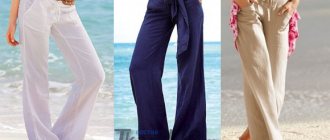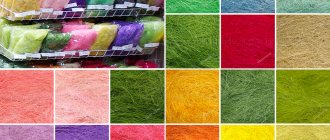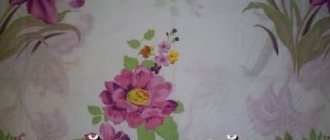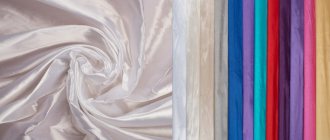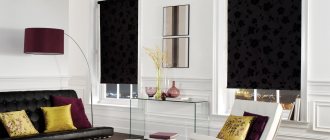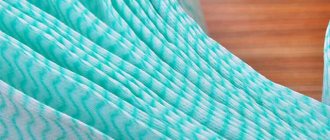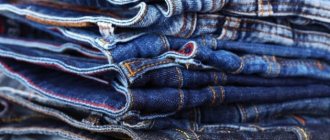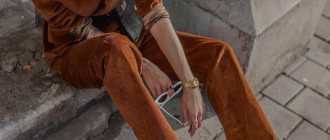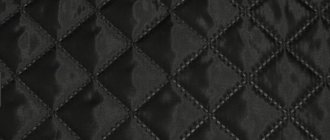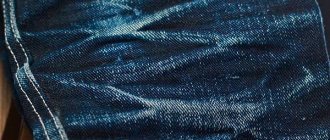Since ancient times, man has mastered agriculture and cattle breeding as the main types of economic activity. All the products that he received as a result of his labor were used for sewing clothes, making household items and cooking.
From the very beginning, nature takes care of us and provides us with everything we need. Over time, man has learned to use its gifts so widely that today there is probably not a single representative of the flora that is not involved in some area of human economic activity.
What plants play the largest and most significant role in human life? Let's try to understand this issue by characterizing the most common areas of application of herbal products.
Areas of plant use by humans
Of the 340 thousand species known to date, about 200 representatives of the flora have been cultivated by humans. A significant portion is collected in wild habitats. These are, for example, medicinal herbs.
In total, there are several main areas in which beneficial plants for humans are used:
- medicine (both traditional and alternative);
- food industry (including confectionery);
- textile production;
- tailoring;
- chemical production (production of dyes, various raw materials);
- decorative purposes (indoor plants, arrangement and design of premises, city streets);
- landscape design;
- use as a source of oxygen (in space, for example);
- plantings in city zones to improve the ecological state of the environment.
Thus, it turns out that the most significant areas of activity for the normal quality of life and preservation of human health are provided with plant-based raw materials. This makes it possible to assert that it is difficult to overestimate the role of flora for people.
Linen fabric
Made from the fibers of a plant called flax. Linen fabric is moisture- and breathable, heat conductive, resistant to stains and washes well, has a pleasant shine, and does not cause allergies. Summer clothes are made from flax, which, thanks to the properties of the fabric, are pleasant to the body in hot weather, the body breathes in it. The clothes are wear-resistant, but wrinkle very much and can shrink a lot if washed incorrectly.
Before you start sewing from linen fabric, it must be moistened with water, thoroughly dried and steamed. You need to sew from completely dried fabric. If you neglect this precaution, the product may shrink during subsequent washing and become one size smaller. Linen fabric is unsuitable for sewing things with a complex cut or folds: the fabric wrinkles heavily and the folds will be constantly deformed, the clothes will take on a sloppy appearance.
Flax fibers are very strong, but stiff and poorly woven together. Therefore, flax production is more expensive than cotton production. This also affects the price of the final products. But flax dyes well and mixes with other fibers, including synthetic ones. With the addition of lavsan, linen fabric shrinks less and is easier to wash, but it becomes more difficult to iron. When cotton is added, the fabric becomes softer and lighter, and the surface acquires a matte shine.
Not only clothes are made from linen fabric, but also various household and decorative items. For example, bed linen, curtains, pillows, strong bags, mattress covers, seats for folding chairs and sun loungers. Art canvases are also made from flax.
Useful plants for humans
There are a lot of them. Each area of use has its own. For example, the chemical industry uses plants from which natural dyes are obtained. In the same area of use is Hevea - a tree whose milky sap is natural rubber. The beneficial properties of plants have been known to man since ancient times and are widely used.
The food industry generally knows no boundaries in the use of plant products: from different varieties of wheat, barley, rye and other grains to cultivated fruits and root vegetables. After all, everything that grows in our gardens is used for food. People receive valuable proteins, fats, carbohydrates, vitamins, micro- and macroelements from plants: rice, buckwheat, tomatoes, cucumbers, cabbage, potatoes, carrots, ocean algae, etc., etc.
Plants also play an important aesthetic role in human life. Indoor species are widespread and numerous. In addition to beauty, they carry the ability to purify and renew the air of a room, absorb and destroy harmful radiation and electromagnetic influences, eliminate negative energy and clean the air from pathogenic microbes. Such plants include:
- cacti;
- Saintpaulia;
- pelargoniums;
- begonias;
- different types of ferns;
- milkweeds and other succulents and so on.
The role of some flora representatives in the textile industry is very significant. Do you know the name of the plants that “dress” a person and give him towels, bed linen, scarves and other products of this industry? The main ones grown on a large scale include cotton and flax. Let's look at these and some other types in more detail.
Cotton fabric
It is made from cotton by combing and spinning the fibers contained in the bolls of the plant. Cotton fiber contains a lot of cellulose, a natural polymer. Thanks to cellulose, cotton fabric has its own characteristic properties. Cotton is quite durable, absorbs moisture well without becoming damp to the touch, but does not allow air to pass through as well as linen. It gets dirty quickly, but washes off very well. Cotton fabric can shrink a lot when washed and takes a long time to dry.
When sewing from cotton fabrics, shrinkage must be taken into account: wash and dry the fabric in advance, before cutting out the parts.
Cotton is often mixed with other fibers, synthetic or natural. This gives cotton fabric other qualities and enhances its properties. Mercerized cotton is much better suited for the production of summer clothing than pure cotton. Such clothes will allow air to pass through and will not heat you up. Pure cotton clothing can be very hot.
Cotton fabrics are different: they are thin, for example, cambric; medium density, for example, satin, calico, chintz, flannel, cloth; and very thick, such as jeans.
What is sewn from it depends on the type of fabric. This can be adult and children's clothing, bed linen, pillows, mattress covers, curtains, etc.
What plants are fabrics made from?
There are several representatives of the flora whose stems and leaves contain special bast fibers. They are used to make fabrics. What kind of plants are these that “dress” a person? These include:
- Different types of flax.
- Hemp.
- Kenaf.
- Abaku.
- Yucca.
- Agave.
- Rope guy.
- Jute.
- Sid.
- Sesbania.
- Rami.
- Kendyr.
Most of them belong to tropical species. Flax, seed, hemp and rope grow in temperate latitudes.
Cotton is also an important representative of the flora for fabric production. In its seeds, thin white hairs are formed, which form entire downy balls. It is from them that the most common, valuable and excellent quality fiber of future fabric is made.
P.Z.: Types of fabric fibers of plant origin!
In addition to expensive fabrics containing animal fiber, there are products using plant fiber. So what kind of fibers do we get from plants and the ability to process them correctly? Let's take a look :)
One of the strongest fibers is tow (flax fiber) , which is used in the production of flax. Smooth and soft, this fiber is resistant to abrasion and stains. The tow has a natural shine, but not elasticity, so additional processing is necessary to reduce its creasing. Flax fiber dries quickly; it is stronger when wet than when dry. Therefore, it is good to use for cases, because... it is wash-resistant. The shrinkage properties of the fiber depend on the type of weave.
Flax is obtained from plant stems that reach a height of 90 cm, which are collected by hand. Sometimes the fibers are treated with hot water to soften the natural resins; after an operation called flax flaying, the stems become like fluffy hair.
Ramie - Known as Chinese nettle! The plant's stem reaches 30cm and its fibers are among the strongest known plant fibers. Rami has a natural shine. It can also be used in the production of high-quality pile fabrics and brushed fabrics.
Cotton is warmer than linen due to its greater fleecy, but is softer. Long fibers are used to produce durable fabric that has good dyeing and mercerizing properties to add shine to the fabric. Cotton fibers have natural curls; pressed, but not twisted, short fibers of cotton can be used as the basis of textured materials. Short fibers do not have sufficient strength and can be used for weft threads, provided they are tightly twisted with other fibers. The resulting material has low abrasion resistance, but is popular due to its rough structure. Short fibers are also used to produce cotton felt for mattresses and upholstery.
There are four varieties of cotton:
1) Island - West Indies - with fiber length - 4.4 - 5 cm
2) Egyptian, with a fiber length of 3.4 - 4.4 cm
Such varieties are used for warp threads and the furniture industry, and due to their elasticity they are also used for lace and fishing nets.
3) American cotton variety with fiber length - 1.9 - 3.1 cm
4) Indian, with fiber length - 0.9 -2.5 cm
These varieties are used for weft threads. The American variety, mixed with other varieties, can be used for warp threads.
Another type of plant fiber is Jute. It has low abrasion resistance and is not suitable for draping. They are used together with other materials as a base for linoleum and carpets, giving them rigidity. Mats made from jute stems, sisal, reed, coconut fibers, seaweed, abaca with various textures and patterns are suitable for interiors in oriental and country style.
That's all about fibers. Now you know everything from the inside! You can easily find the fabric you need for covers, curtains, etc. Enjoy your crafting :)
Cotton plant in nature
Under natural conditions, this culture is very widespread in various forms. Man cultivated cotton more than 5 thousand years ago. And this is not surprising. After all, 40% of the fabrics produced in the world are cotton.
The plant has fairly tall (up to 200 cm) shrub-shaped stems. The leaves are medium-sized, with a beautiful dissected leaf blade. The flower is small, discreet in color (yellow, white or cream). After flowering, it changes colors to red, orange or purple. In its place, a fruit is formed - a box in which the seeds ripen.
One fruit can produce about 50 seeds. Moreover, each seed forms up to 15 thousand thin hairs, which are used to produce tissue. The appearance of the ripe fruit is very interesting: the box opens and white cotton balls of fluff appear out. At this time, the industrial crop is harvested for processing into fabric.
Cotton fabric
Women of all ages and all occupations love it, it is easy to sew and does not cause discomfort to wear - it is cotton material. How is lightweight cotton fabric produced, and what varieties are there?
Production
Cotton is a shrub whose height ranges from 0.5 to 3 meters. It grows in the USA, China and India. First, a flower emerges from the bud, which turns into a soft box. It matures and gradually opens up.
In Rus', this material was called “cotton paper” for a long time because of the smell that appeared when burning. Now the common name is cotton or cotton.
Previously, the “fruits” of cotton were collected manually, but today they are mostly mechanized. The boxes are cleaned of impurities and seeds, and the resulting ingredients are rolled and pressed. In production, fibers are spun into threads, which are sized with liquids based on resin or starch. Then they are bleached in solutions of hydrogen peroxide or bleach. The glue is washed off from the canvas and painting occurs. The final stage is finishing**, during which the appearance of the fabric or its performance changes: it becomes heavier, smoother or silkier.
Finishing is a series of manipulations that give cotton fabric certain consumer properties (blueing, wrinkle resistance, etc.).
Compound
Textiles in which 90% are natural components are considered natural. 10% of impurities in the composition of cotton are acceptable. Pure, organic cotton is the most environmentally friendly, although it often contains other components:
- acetate - threads that are produced on the basis of chemical ingredients and cellulose;
- polyester and acrylic - synthetics;
- flax is a durable plant material;
- viscose is an artificial fiber.
These additives extend the life of the product. Outfits keep their shape, shrink less and do not fade as quickly.
Types of weave and types of materials
The appearance and properties of textiles depend on the methods of weaving the threads.
With the plain method, the yarns are evenly laid on top of each other. The cut is smooth and durable. As a result, the following types of tissues are formed:
- calico - cotton, from which bed linen or home dresses are sewn;
- cambric is a thin, pleasant cotton, it is used to make blouses or light outfits;
- calico is a rough material for upholstery;
- chintz is a pleasant option for summer; children's clothes and nightgowns are made from it;
- muslin - cotton with impurities, great for curtains or curtains;
- poplin – finely ribbed cotton.
Twill weave is asymmetrical. It alternates threads: 1 through 2, 1 through 3. The result is a dense textured cut:
- denim – fabric for casual wear (jeans, overalls, shorts);
- tartan - large checkered canvas (trousers, school uniform);
- flannel - warm cotton with fleece (clothing for babies, durable shirt-coats).
In a satin weave, the weft threads are directed towards each other horizontally and vertically towards the warp threads. The result is silky and smooth satin, from which elegant robes and shirts are sewn.
When a third thick thread is introduced into the yarn, a pile weave is created. This is how cotton velvet appears. You can use it to create evening dresses or home textiles.
Crossing is a type of weave that produces dense knitwear (interlock). Tracksuits and underwear are made from it.
Types of cotton fiber
The quality of the future yarn, its application and the appearance of the resulting cut depend on the length of the fibers.
Short-fiber raw materials are rarely used in production in their pure form, since their length (20–25 mm) is not enough. Medium-fiber cotton grows in China, India and Pakistan. It can be used to produce satin or calico.
Long fiber components are valuable and expensive. This type of cotton is grown in Egypt. It is the main ingredient for expensive fabrics: pima, giza, mako, which resemble silk in appearance and tactility. This is the basis for elite luxury bed linen.
| Cotton fiber | Characteristic |
| Short-fiber | 20–25 mm, do not use in pure form |
| Medium-fiber | 27–35 mm, for making chintz, carded satin |
| Long-fiber | 36–50 mm, high-quality expensive yarn is obtained from it |
With the help of long combing, short- and medium-staple yarns can be made into a semblance of long-staple yarn.
Pros and cons of cotton
What could be the disadvantages of cotton, which has conquered the whole world?
- Exposure to direct sunlight and hot batteries gradually destroys its structure.
- Light cotton without impurities must be constantly bleached and ensure that yellow spots do not appear during drying.
- It wrinkles and can shrink a lot after washing.
- It takes a long time to dry.
But these are small things compared to the advantages:
- instantly absorbs moisture;
- the skin in such things “breathes”;
- “not afraid” of moths;
- suitable for allergy sufferers;
- can be painted without any problems;
- warms and feels comfortable even on a child’s body.
And the most important thing is the price, which will be affordable for different segments of the population.
Application
Cotton production in the world is over 25 million tons annually. It is carried out in 80 countries. Its main area of application, of course, is as a source of high-quality fabric with excellent technical characteristics.
Plants that “dress” a person certainly include cotton in their list. Everyone knows the excellent quality of cotton clothing, especially if the material is combined with other additives that improve wearability and prevent severe wrinkling.
Cotton has been cultivated as an industrial crop for a very long time. Previously, only very rich people could afford to wear clothes made of this material. Today it is not a luxury item at all, but a necessity. Cotton fabrics are durable, beautiful, easy to dye, soft and pleasant to the body, wear-resistant.
Flax in nature
The best plants that “dress” a person also include flax in their list. Under natural conditions, there are approximately 330 species of this representative of the flora. The most common is common flax. This is what is used to produce fibers.
The culture is a herbaceous form up to 1 meter in height. The stems are strong but thin, the leaves are lanceolate, the flower is not large but medium in size, the color of the corolla is soft blue, almost lilac. In the wild, there are species with bright yellow and white flowers. Flax is a plant (photo can be seen below) that is quite often found in nature in temperate latitudes.
The main value of flax is represented in its stem. It is in it that bast fibers mature, secreted by humans for their own needs. These stems are collected only after they are fully ripe, that is, yellowing.
The plant itself is very unpretentious. It calmly tolerates low temperatures and lack of moisture, and is not attacked by pests due to the rather toxic substance contained in the stem and leaves. This makes flax cultivation very convenient for people.
Cotton
Cotton is easy to weave, reflects light and is a cool fiber. It can be worn and washed many times and dries quickly. Cotton fibers are well known for their high consumer acceptability. Cotton is highly absorbent, feels soft and breathable. However, despite all these advantages, cotton folds easily. Additionally, although cotton is one of the best-selling natural fibers, it faces cost challenges when competing with other materials. In the article "Harnessing the Benefits of Natural Fibers" in Nonwovens Industry , technical manager Chuck Allen said customers want new uses "but don't want to pay extra for them."
Application
Humans use not only the stem of this species, but also other parts.
- Flaxseed oil is obtained from flax (medicine, cosmetology, technical purposes).
- Extracts from the plant are used in medicine.
- Specialized medical threads and dressings (cotton wool, bandages) are made from flax.
- Fabrics from this plant can be thin and lacy, or they can be extremely durable and rough (burlap, ship canvas).
In addition, flax is a very delicate plant (the photo clearly demonstrates this), so from an aesthetic point of view it is also very suitable for growing.
Hemp fabric
Made from hemp fibers. Since ancient times, people have actively used fabrics obtained from this plant in everyday life, including sewing clothes from them. At that time, hemp fibers required complex processing, a process that took a lot of time and effort. Now technology has become more advanced, and people have developed hemp that does not contain narcotic substances.
The fabric and hemp are incredibly durable, and the clothing is wear-resistant. It is considered medicinal, antiseptic, and does not cause irritation or allergies. The body in hemp clothing breathes, keeps warm in winter and cool in summer. When growing hemp, they do not use pesticides or other substances harmful to health, because... hemp does not require any special care. The fibers are environmentally friendly. The fabric is also not chemically treated. So we can call hemp fabric one of the most natural fabrics.
A very interesting property of hemp tissue is its ability to protect the body from harmful environmental influences: heavy metal salts, parasites, fungi, ultraviolet radiation. Lignin contained in hemp blocks ultraviolet radiation by 95%.
Hemp fabric withstands frequent wear and washing. Doesn't shrink like other natural fabrics . It stains well and therefore does not fade.

